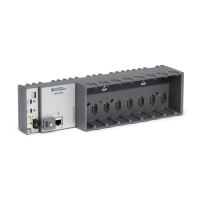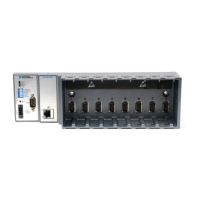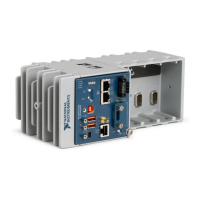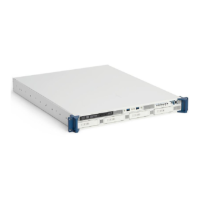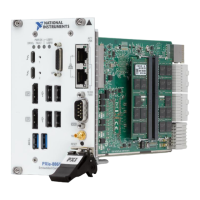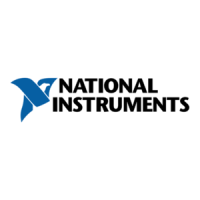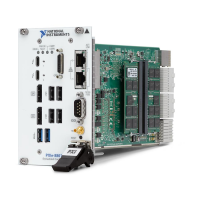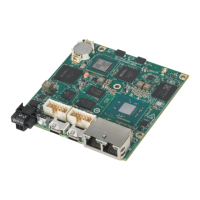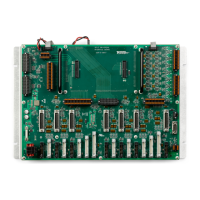• Counter n Internal Output and Counter n TC Signals
• Frequency Output Signal
In this section, n refers to the cRIO controller Counter 0, 1, 2, or 3. For example, Counter n
Source refers to four signals—Counter 0 Source (the source input to Counter 0), Counter 1
Source (the source input to Counter 1), Counter 2 Source (the source input to Counter 2), or
Counter 3 Source (the source input to Counter 3).
Note Note All counter timing signals can be filtered. Refer to the PFI Filters
section for more information.
Counter n Source Signal
The selected edge of the Counter n Source signal increments and decrements the counter value
depending on the application the counter is performing. The following table lists how this
terminal is used in various applications.
Table 27. Counter Applications and Counter n Source
Application Purpose of Source Terminal
Pulse Generation Counter Timebase
One Counter Time Measurements Counter Timebase
Two Counter Time Measurements Input Terminal
Non-Buffered Edge Counting Input Terminal
Buffered Edge Counting Input Terminal
Two-Edge Separation Counter Timebase
Routing a Signal to Counter n Source
Each counter has independent input selectors for the Counter n Source signal. Any of the
following signals can be routed to the Counter n Source input:
• 80 MHz Timebase
• 20 MHz Timebase
• 13.1072 MHz Timebase
• 12.8 MHz Timebase
• 10 MHz Timebase
• 100 kHz Timebase
• Any PFI terminal
• Analog Comparison Event
• Change Detection Event
In addition, TC or Gate from a counter can be routed to a different counter source.
106 | ni.com | cRIO-904x User Manual
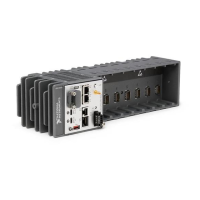
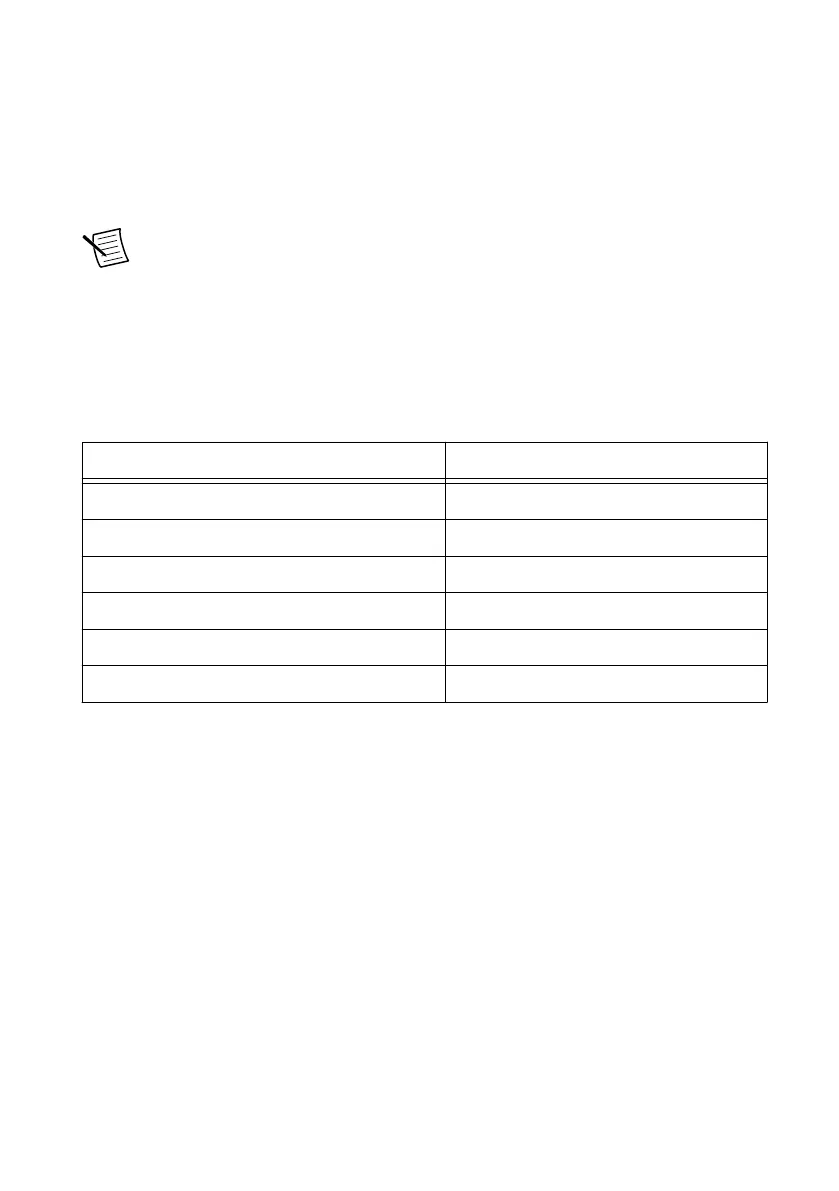